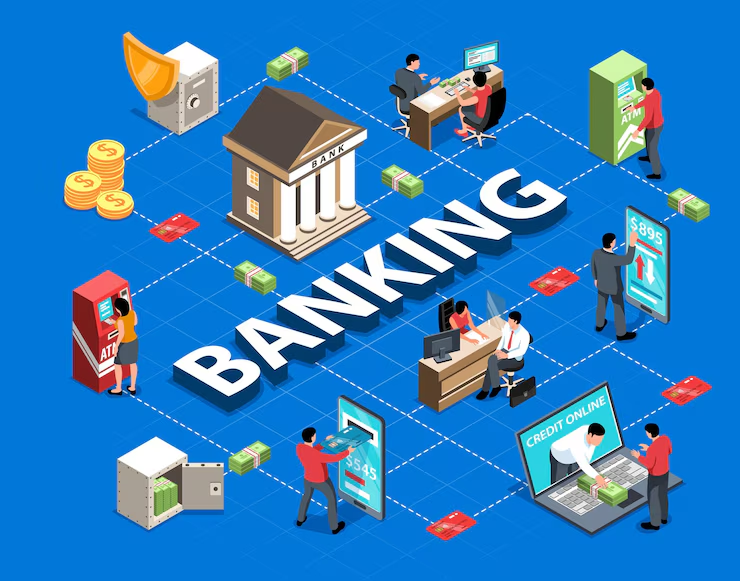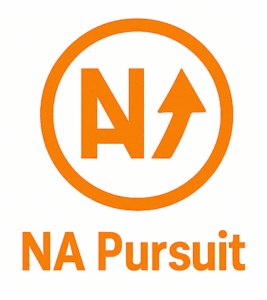Open Banking Overview: Will Banks Become Obsolete?
Open Banking — because it’s most definitely messing with your business model, whether you’re a fintech whiz or a banking bigwig. Throw out wooden ledgers and horse-and-buggy transactions; in our brave new world, your financial data can flit from platform to platform at the speed of a TikTok trend. So, is this the dawn of a banking apocalypse or a great makeover?
Here’s what we’ll dive into:
- Open Sesame to Data Sharing (But Not That Kind): We’re not talking about banks unlocking their vaults — it’s about API wizardry. Imagine this: Customers (and with their consent!) can finally share their transaction history, balance, and more with third-party apps. Consider budgeting applications, streamlined loan processing, and personalized finance advice — all built on the back of open streams of data. It’s the Wild West of finance, only without the tumbleweeds and more algorithms.
- Fintech’s Playground, Though Banks Still Seated at the Table: Open banking has certainly shaken things up, opening the door to countless fintech innovations. From robo-advisors to instant payment apps, the options are limitless. However, old-school finance isn’t dead yet. They still have the brand recognition, the regulatory infrastructure, and that sweet, sweet consumer trust — currency they can utilize in this new game.
- The “Obsolete” Question: It’s Complicated: Will open banking make banks open for business? That’s the million-dollar question (or more, based on your banking portfolio). We will discuss open banking revolution and how it forces banks to either adapt and become more customer-focused or to fall behind. Spoiler alert: it’s not as straightforward as ‘yes’ or ‘no’.
- Risks and Opportunities: It’s Not All Sunshine and APIs: Let’s not sugar coat it. Data security, privacy issues and the difficulty of threading a path through a complicated regulatory landscape is all part of the open banking deal. But with risk comes often huge opportunity. Meantime consider new sources of revenue, better customer experiences and a more competitive fiscal landscape.
- What’s Next? Open Banking 2.0: A Look Ahead: We’ll consult our crystal ball and make some predictions about what the future of this ecosystem will hold. Will the consolidation of financial services tighten further? Is open finance the next frontier? Come along for the ride as we unpack the possibilities — and the consequences.
This isn’t just a new way to use technology; it’s a paradigm about how we store, manage and spend money. Hold onto your hat, because it’s about to get interesting.

A Week in Review: Open Banking Trends, Impacts & Actionable Insights
Below are some of the major trends of Open Banking that are changing the landscape:
Positive Trends
- Hyper-Personalization Takes Center Stage: (Trend: Positive) Tailored, authentic experiences are what customers demand. Open Banking data enables companies to create highly tailored products and services — whether bespoke financial advice or targeted lending. For example, fintechs are using transaction data to create automated budgeting tools that digest and analyse a person’s spending activity and help make personal finance easier (and a bit more enjoyable). Impact: Higher customer satisfaction and revenue from relevant product offerings. Make those recommendations a data analysis with a graphical representation to better understand your customers, segment their needs based on financial position.
- Embedded Finance Blooms: (Trend: Positive) No longer limited to banks, financial services. Open Banking APIs benefit from the ability to integrate banking capabilities directly within apps and platforms that are not financial in nature. Example: Open Banking enabled on-the-spot financing from e-commerce platforms, empowering you to purchase that new gadget money-can’t-buy (if you don’t write it off as ‘your expense for the year’) Impact: Creating new revenue streams and extending customer reach through integration of banking services at the workflows. Takeaways Engage partners to strategically embed and drive value around financial services.
- Open Banking as a Service (OBaaS) Goes Growing: (Trend: Positive) OBaaS providers offer insightful and ready-made Open Banking infrastructure. This reduces the barrier to entry for enterprises who want to take advantage of Open Banking without the need to create their own. For example: Startups are utilizing OBaaS to bring to market new financial products without the need of investing significant capital upfront or a regulatory headache. Effect: Increased rate of innovation and market entry. Analyst Recommendation: For OBaaS, Parnter with established OBaaS providers for a streamlined development for their core value proposition.
Adverse Trends
- Data Privacy Issues: (Trend: Adverse) Customers are reluctant to share their financial information. Data breaches and misuse are an enormous concern and could undermine trust. Sample: The advantages Open Banking can bring is more than compelling, but increasing data breaches have shaken customers’ trust in the system. Consequences: Less customer adoption and damage to reputation. Expert Tip: Ensure proper consent strategies are in place before data collection.
- Regulatory Fragmentation Presents Headaches: (Trend: Headwind) Open Banking isn’t one-size-fits-all, as the regulatory regimes differ wildly from one country to another. It poses challenges to their global operations and new markets expansion. For example, a tried and tested Open Banking solution in Europe may need drastic upgrades to keep up with the needs of US or Asian markets, creating wastage of both time and money during development. Impacts: Higher compliance costs and delayed expansion. Analyst Recommendation: Hire expert regulatory counsel early on, and build a versatile technology platform that can be quickly adapted to different jurisdictional requirements.
- API Standardization Struggles Never Go Out Style (Trend: Adverse) We must talk about the lack of industry-wide standards in terms of APIs among financial institutions, as this can lead to high costs and hard integrations. Each banking institution has its own proprietary data structure and API format, making it challenging to integrate with them. For instance, A fintech company that needs to integrate with a multitude of banks might discover that they are required to create and maintain numerous custom integrations, significantly increasing their development overhead. Effect: Reduced uptake and increased expenditure. Analyst Trend: Rewind the standardization movement, promote API harmonization.
Conclusion
The Open Banking space is a vibrant one with great opportunities but also considerable challenges. With a keen awareness and proactive response to these trends, businesses can thrive in the complexities and enjoy the rewards. The future will be about hyper-personalization, embedded finance, data security and regulatory navigation. We will keep it nimble, we will keep it smart, we will keep on making finance a little less boring!
- Finance: “If a patient is utilizing this system, they can easily share their financial transaction data with a healthcare provider so they can quickly understand the patient’s ability to pay for a treatment plan. This reduces paperwork and expedites the approval process, so patients are able to begin treatment more quickly. Open banking data also allows the hospital to gain a deeper understanding of patient demographics so that it can allocate its resources accordingly to different patient segments.
- Technology: An Software as a Service company that uses APIs for open banking and provides its clients with real-time updates on their financial health. The automatic categorisation of transactions, cash flow predictions, and alerts, not only help keep users educated but also increase customer engagement and value proposition. This Byte-sized Embedded Finance solution helps their customers streamline their finances in the tools they live in daily.
- Automotive: An automotive manufacturer provides tailored financing directly from its website based on a customer’s open banking data. It eliminates the friction of traditional loan applications and speeds up the buying process, which could lead to more sales. Based on payment behaviour and affordability, the manufacturer will be able to also come up with targeted offers.
- In this case, an open banking data was utilized by a manufacturing company to optimize supply chain management. Swift access to payment information from suppliers can allow businesses to forecast cash flow more accurately and manage the levels of inventory. That enables them to sign better deals and to avoid production delays. It also helps gain clarity on the financial fitness of its small and medium-sized enterprise supplier ecosystem.
- Retail: A digital retailer employs open banking to offer customers real-time refunds. Instead of having the customer wait for days for traditional refunds, the retailer can take a few steps to initiate a direct transfer, enhancing the customer experience. By analyzing their customers’ spending habits using open banking, they are able to offer personalized discounts that will help to ensure brand loyalty.
- Real Estate: A property management company implements open banking for automating rent collection and payment processing. In addition, tenants can authorize direct debit payments and all payments are reconciled through the platform, which minimizes administrative work on the side of the company and ensures tenants do not miss a deadline. The company can also get insights into occupancy rates and trends in rent payment.
- Greater API Development & Specialization: Firms are investing in the creation of specialized APIs that focus on more niche use cases within Open Banking, as opposed to the basic account aggregation. Some providers now offer APIs for managing recurring payments only, or for complex financial data analysis as would be used in a platform for wealth management, which is a sign of growing insight into the specific needs of clients.
- Strategic Partnerships with Embedded Finance PlayersOpen Banking firms are partnering with other companies outside financial services to gain access to embedded finance products. This would mean embedding their APIs into top-level applications, such as e-commerce sites or payroll providers, where transactions and data could be shared across that ecosystem, thereby expanding reach and utility.
- Focus on Data Security and Compliance Solutions: Companies are spending significantly on better security and compliance tools, considering increasing regulatory scrutiny. We see this to some extent with the recent rollout of solutions specializing in consent management, secure data tokenization, and risk assessment to create a safer and more compliant Open Banking ecosystem.
- (Ownership Table II–Entry by Acquisitions and Partnerships) Geographic Expansion: Inorganic as Well In the race for geographic expansion, several Open Banking players have successfully pursued their entry strategy inorganically (through acquisitions and partnerships), acquiring small local players or partnering with firms having a strong regional presence. This allows them to navigate regulatory specifics quicker, and rapidly capture market share in new markets.
- AI-Driven Solution & Insight: Open Banking providers are enabling the use of Artificial Intelligence and providing clients with the most advanced possibilities for data analysis. These new offerings are basically AI tools that predict cash flow, provide personalized financial advice, automate back-office tasks for business, etc. and create more value through predictive logic on top of Basic data access.
- Bundled Products & Platform Play: Open Banking companies are increasingly bundling their APIs & services and building integrated platforms. Providing an end-to-end solution through extensive packages rather than individual APIs bringing together multiple functionalities, including payment initiation, account aggregation, and reporting functionality all in one offering.
-

Outlook & Summary: Open Banking — Game Over for Banks? Not Quite … Yet!
On that point, we hope the next 5-10 years in Open Banking will be a roller-coaster ride. Here’s what to watch for and the key takeaways:
- Hyper-Personalisation Reigns Supreme: Open Banking will drive even more custom financial offerings. Like hyper-specific loan choices, investment portfolios tailored to your coffee-consumption tendencies (seriously!), and more intuitive budgeting tools that have your needs figured out before you do. It’s all about predicting and responding to the individual.
- API Integration — The New Normal — Seamless integration between different platforms will be the status quo, not the outlier. Banks must come together to create robust APIs, or be left behind in the fintech dust. Imagine consolidating your checking, savings and investments across providers into a cohesive and singular interface.
- Fintech Ecosystem Boom (But Banks Aren’t Dead): The tide of open banking is lifting all Fintech boats, but that doesn’t mean banks will become irrelevant. Rather, banks will become a ‘platform’ on which Fintechs build new innovative financial services – like a strong infrastructure provider. There will be blurry lines, and partnership will be key. Think “co-opetition.”
- The Importance of Data Security and Transparency: As financial data becomes widely available, ensuring that this data is adequately protected will be critical. Welcome to a world where users will justifiably demand absolute transparency on how their data is used and making Fintechs to operate at higher levels of security and ethics.
- The Takeaway? The moral of the story is yet again: Open Banking is not about banks dying, it is about banks changing. They have to be agile and creative, ready to collaborate, always prioritizing user experience and data privacy. It will not be a winner takes all game. There’s a lot of room to play there.”
And so, amidst all of these changes happening at lightning speed, how will your organization utilize the possibilities Open Banking creates to get ahead of the game?






